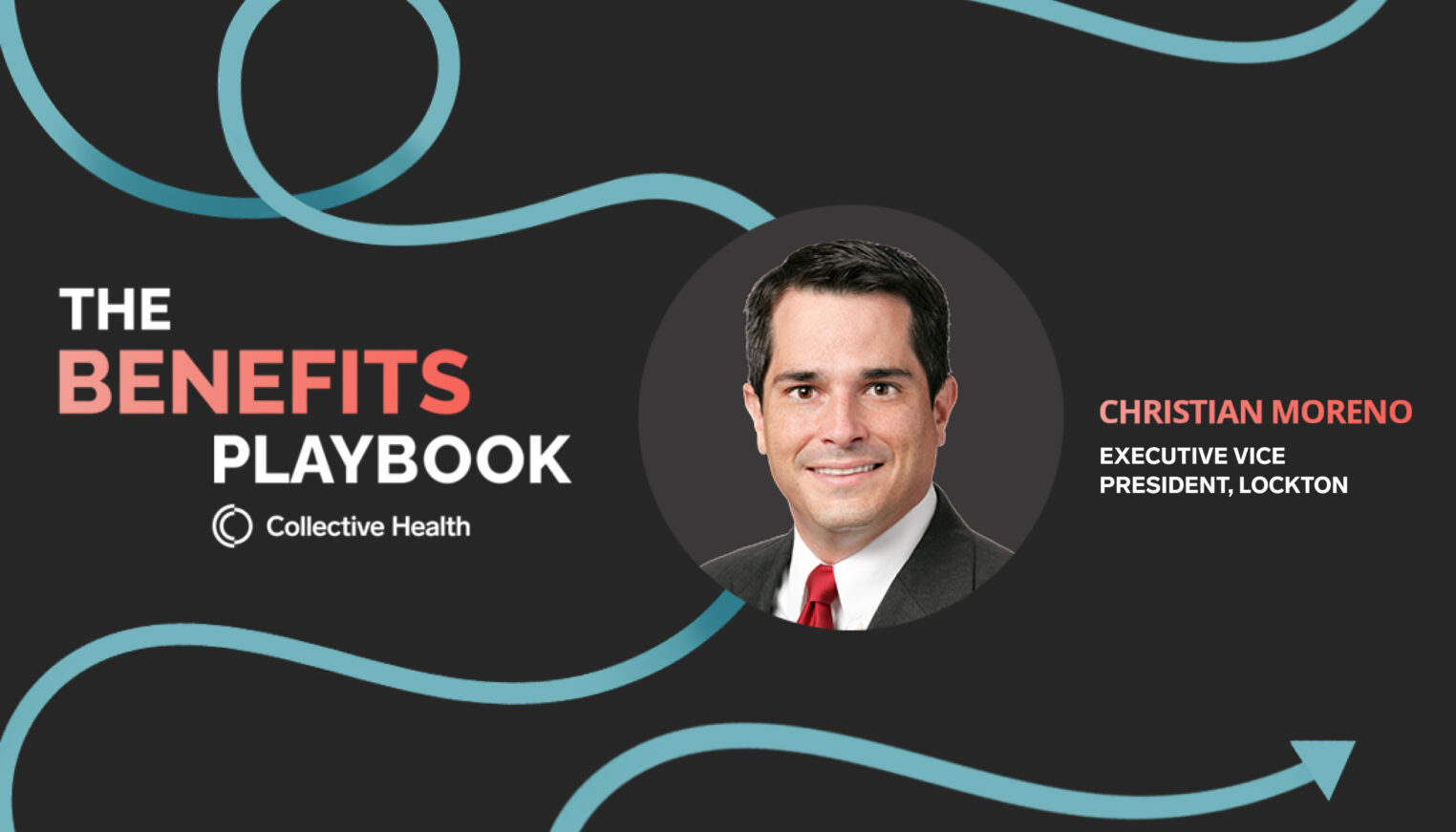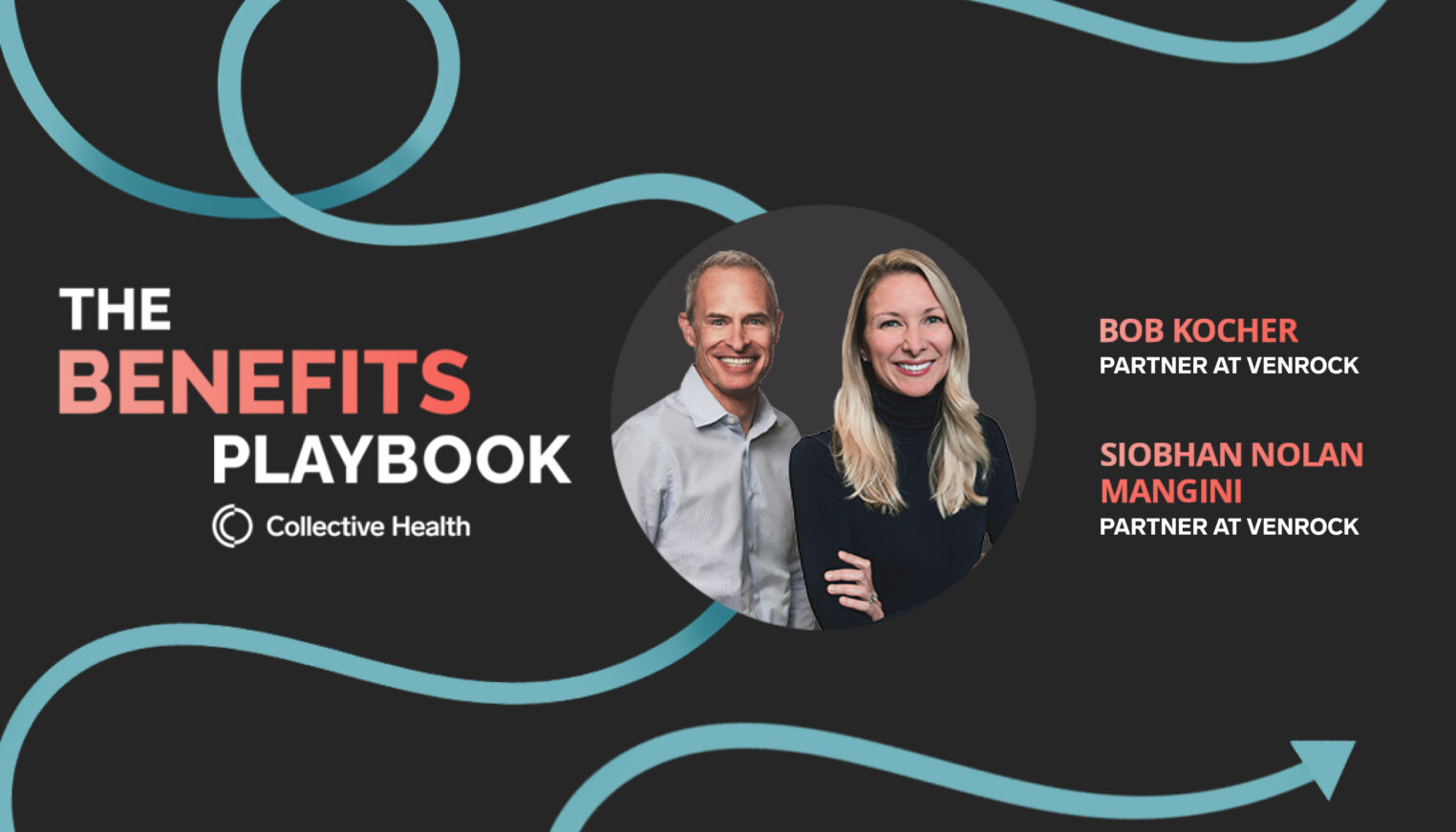Heading into 2022, companies face the reality that the post-Covid era isn’t here, and that the “new normal” is ever changing. So what does an ever changing environment mean for healthcare? From innovative, specialized care plans to virtual medicine, here are the key predictions from some healthcare industry leaders.
As we close out the year here at Collective Health and consider the impact 2021 has left on us, our partners, our customers, and our members, we asked experts from our Premier Partner Program what they think the future of healthcare holds for us all in 2022.
Earlier in 2021, we reflected on the marked shift to virtual-first care, and now we’re building on that knowledge. Join us as we explore emerging trends in mental health, fertility care, advanced oncology, and more.
- Mental health: preparing for the next new normal
- Telemedicine: a virtual-first approach and expanded primary care
- Family forming care: the focus remains
- Musculoskeletal health: pent-up demand for care and surgery
- Cancer care: better access to specialized care
Mental health: preparing for the next new normal
The most broadly-discussed topic over the last 2 years has been mental and behavioral health. With the onset of a mental health crisis amidst the pandemic, employers quickly scrambled to find ways to better support their employees. We spoke to experts from two of the leading behavioral health solutions, Dr. Myra Altman, VP of Clinical Strategy & Research at Modern Health, and Désirée Pascual, Chief People Experience Officer at Headspace Health, to get their thoughts.
Based on a recent survey from Modern Health, 60% of leaders plan to revert back to pre-pandemic mental health strategies in 2022, a situation which Dr. Altman predicts could create backlash from employees in 2022.
“We’ve opened Pandora’s Box of Mental Health,” said Dr. Altman. “The pandemic has led to a focus on mental health, including its role in the workplace, and there’s no going back. While some may be anticipating a return to ‘normal’, it’s much more likely that we will need to find a ‘new normal’.”
Désirée Pascual from Headspace Health said the last two years have highlighted the inextricable link between employee mental health and Diversity, Equity, Inclusion, and Belonging (DEI&B) initiatives. “Employers will continue to look for solutions that support a wide range of employees, moving away from the ‘one size fits all’ mindset,” Pascual said. “Culturally competent virtual care will play a critical role in meeting these needs.”
In 2022, Pascual also predicts that the focus on structured clinical data management and machine learning will reveal valuable insights and opportunities to expand accessible, inclusive mental healthcare. “Conversations will continue to shift from the ‘business case’ for DEI&B to the ‘wellness case’ for DEI&B, given the continued focus on building, retaining, and supporting diverse workforces.”
Ultimately, Pascual highlights that those employers who decide to embrace inclusive, flexible, human-centered workplace practices will benefit. “[Employers] will see a rapid ROI, including increased retention, engagement, and productivity.”
Telemedicine: a virtual-first approach and expanded primary care
Along with mental health, virtual care and the opportunity it presents for expanded access to primary care, stood at the forefront of discussions around healthcare. With employers looking for options to keep their employees safe from COVID while still able to access care, many turned to solutions like 98point6, an app that delivers on-demand diagnosis and treatment from board-certified physicians, and Teladoc, a multinational telemedicine and virtual health company.
We spoke to 98point6’s Chief Medical Officer, Brad Younggren, MD who is an Emergency Physician, along with Teladoc’s President of their US Group Health, Kelly Bliss, to hear their predictions for 2022.
Dr. Younggren said he anticipates 2022 being a year of expansion–of access to healthcare, of the use of technology in monitoring care, and of care offerings. “In the months to come, patients will be looking for more holistic, accessible healthcare, Younggren said. “Providers and employers will respond with single-point, on-demand, virtual solutions that offer primary care, mental health care, wellbeing guidance, and more.”
Along with virtual care, Younggren highlighted the huge opportunity that lies in remote patient monitoring (RPM), as devices that can offer much-needed capacity relief to our healthcare systems while simultaneously benefitting patients.
“Imagine a wearable device that monitors blood pressure or blood oxygen, then not only collects and transmits that information to care providers, but does so in a format that doctors can use,” Younggren said. “Such devices have the potential to reduce hospitalizations, readmissions, and lengths of stay, all of which reduce care costs while also improving patient quality of life.”
Kelly Bliss of Teladoc said virtual primary care has emerged as a key area of long-term investment for payers and employers alike, and she and her colleagues at Teladoc expect this to gain even more momentum heading into 2022 and beyond. She said the benefits of virtual-first care go beyond increased access to primary care.
“In addition to expanding access to primary care, a virtual first approach can be used to prevent downstream health complications and costs through prevention and screening. The type of care coordination and clinical navigation assistance provided by these plans will be commonplace in benefit designs across the board.”
Family building remains a focus
The U.S. The Bureau of Labor Statistics reported that 1.8 million women have left the workforce since the start of the pandemic. And during the pandemic, the popularity of fertility preservation services, like egg freezing, grew, while many people felt they had to put their personal lives on hold. Employers, in turn, turned to fertility and family building benefits as a tool for recruiting and retaining top talent.
We spoke to Pete Anevski, the President and Chief Operating Officer of Progyny, a fertility and family building benefits solution, to hear what he thinks 2022 holds for their field. Avenski said from his company’s own experience, they’re headed for growth.
“In 2022, the unemployment rate is likely to stay low, and the hunt for talent is likely to remain just as competitive as it is now,” Avensky said. “As a result, at Progyny, we predict that employers are going to continue to use competitive health benefits packages as a tool for recruitment and retention – and particularly family building benefits. Progyny’s growth of covering 4M lives in 2022 is a testament to leading employers realizing the importance of this.”
Musculoskeletal health: pent-up demand for care and surgery
Hinge Health, is a digital musculoskeletal (MSK) clinic that pairs advanced sensor technology with computer vision, and a full clinical care team for employees. We spoke to their Medical Director, Dr. Louis Dickey, who said that clients should anticipate a rise in MSK costs due to higher demand.
“With more and more people being vaccinated, hopefully, the worst of Covid is behind us. Clients should anticipate that musculoskeletal costs could return to or, potentially exceed, pre-Covid levels due to pent-up demand and surgical facilities available for MSK procedures. Digital MSK clinics, such as Hinge Health, are well-positioned to provide members with convenient access to conservative care, monitor compliance, and educate on their non-invasive options — ensuring members are only getting medically necessary surgical interventions.”
Cancer care: better access to specialized care
Todd Sachs, MD, is the Chief Medical Officer at AccessHope, a company that offers a revolutionary employer-paid benefit connecting employees with cancer to the latest cancer knowledge. Dr. Sachs predicts that more people who have been diagnosed with cancer will be able to access highly specialized care through a hybrid of in-person and remote support.
“About 60 million Americans reside in rural communities. Where people live—and whether they have the ability or means to access high-quality healthcare—is one of the most significant determinants of health disparities in the United States,” Dr. Sachs said.
While telehealth can help oncologists reach more people with cancer, Dr. Sachs said a hybrid of in-person and remote cancer support services allows people who live in remote or rural areas to receive optimal care.
“With oncologic subspecialty expertise, people with cancer will be able to better navigate the entire cancer journey, I believe, as we head into 2022 and further into the future.”
+++
With a focus on improved accessibility across the board, it’s clear that digital health solutions will play a vital role in delivering more holistic, personalized care in 2022. At Collective Health, we believe that digital technologies provided by best-in-class companies will help bridge gaps in healthcare, which is why we created our Premier Partner Program. Companies that make our select list have demonstrated impact across the most sought-after clinical categories.
And so, while the Omicron variant continues to disrupt the long-awaited return to a “new” normal, it is clear that COVID-19 has transformed the world in unexpected ways. It has driven innovation in the healthcare field, put science at the center of public debate, and heightened the nation’s expectations for advanced solutions to the most pressing health problems, both physical and behavioral.
For us here at Collective Health, as we bid farewell to 2022, we would like to thank our Premier Partners and the incredible work of healthcare providers and researchers for their exceptional contributions in these unprecedented times.



